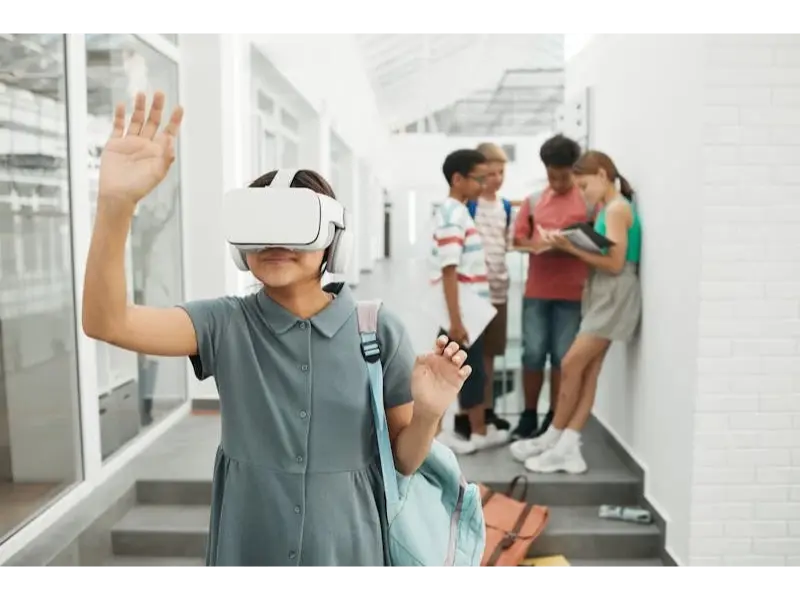- Data analytics and insights in virtual reality applications enhance understanding of student engagement, performance, and learning outcomes.
- Cloud computing infrastructure supports seamless integration of virtual reality content, providing scalability and flexibility for educators.
- Virtual reality creates immersive digital learning environments that foster creativity, critical thinking, and interactive learning experiences for students.
Virtual reality (VR) technologies are turning standard classroom instruction into immersive, interactive learning environments. VR technology is changing how teachers engage with students and enhancing learning results. Applications of this technology range from analysing student engagement to developing digital learning environments. Educators may obtain vital information to properly track student development and tailor education by utilising the data analytics capabilities found in VR platforms.
Analytics and insights from data
When it comes to virtual reality applications in the classroom, data analytics and insights are essential for comprehending student performance, engagement, and learning objectives. Through the use of data analytics capabilities found in virtual reality platforms, instructors may obtain important information about how students engage with immersive learning environments.
Teachers may more effectively monitor student achievement, pinpoint areas for growth, and customise lessons by analysing this data. By using data-driven insights, teachers can maximise each student’s learning experience and improve the efficacy of virtual reality apps in the classroom.
Also read: How virtual reality has become a much needed tech revolution for museums
Infrastructure and cloud computing
Infrastructure and cloud computing are crucial elements that enable the smooth integration of VR apps in the classroom. Educational institutions may safely and effectively store and access virtual reality information and apps by utilising cloud-based solutions. With cloud computing, teachers may provide students with immersive learning opportunities without requiring a large amount of on-premise technology.
Furthermore, the scalability and flexibility of cloud-based virtual reality systems enable educators to adjust to evolving technical breakthroughs and changing educational demands. Educators can fully utilise virtual reality in the classroom and give students engaged, captivating learning experiences by using cloud computing technology.
Digital learning environments
Immersion digital learning environments are produced using virtual reality applications in education, which improve student retention and engagement. Virtual reality provides students with an interesting and dynamic way to connect with digital information, study complicated topics, and work with peers by modelling real-world settings and interactive experiences.
In comparison to typical classroom settings, these digital learning environments provide students with a more dynamic and engaging learning experience by encouraging creativity, critical thinking, and problem-solving abilities. Virtual reality applications in education transform learning into a personalised and experiential journey, empowering students to explore and learn in a way that suits their individual learning styles.
Also read: XR through the years: From the nausea-inducing Virtual Boy, to Apple’s era-defining Vision Pro
Interactive learning experiences
Applications of virtual reality in education provide students with immersive, interactive learning opportunities. Students may perform scientific experiments, go on virtual field trips, and learn about historical events in a more dynamic and interesting way via virtual reality simulations.
Students may apply theoretical information to real-world circumstances through these interactive learning activities that encourage active learning, collaboration, and experiential learning. Teachers may create memorable and significant learning experiences that improve students’ motivation, curiosity, and engagement with the subject by immersing pupils in virtual worlds.

